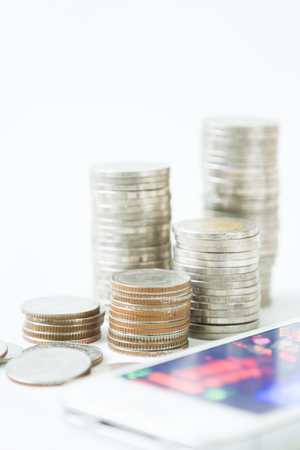Introduction to Precious Metals in Investing
Gold and silver have been valued for centuries, not only for their beauty but also for their role as a store of wealth. These precious metals have stood the test of time, maintaining their worth even during economic downturns and financial crises. Investors often turn to gold and silver as a way to protect their portfolios from inflation, currency devaluation, and market volatility.
Historical Significance of Gold and Silver
Gold and silver have played a crucial role in economies around the world. Their historical significance can be seen in various ways:
- Ancient Currency: Both metals were used as money for thousands of years before paper currency became common.
- Store of Value: Unlike fiat currencies, which can lose value due to inflation, gold and silver have historically maintained purchasing power.
- Crisis Hedge: During times of economic uncertainty, investors flock to precious metals as a safe-haven asset.
Gold vs. Silver as Investment Assets
While both gold and silver are valuable investment assets, they have some key differences. The table below highlights these distinctions:
| Aspect | Gold | Silver |
|---|---|---|
| Market Value | Higher price per ounce | More affordable than gold |
| Main Uses | Mainly used for investment & jewelry | Used in industry, technology & investment |
| Sensitivity to Economy | Lesser industrial use; more stable | Affected by industrial demand; more volatile |
| Liquidity | Easier to trade globally | Slightly less liquid compared to gold |
The Role of Precious Metals in Portfolio Diversification
Diversifying an investment portfolio helps reduce risk, and gold and silver play an essential role in achieving this balance. Here’s why:
- Hedge Against Inflation: When inflation rises, the purchasing power of cash decreases, but gold and silver tend to retain their value.
- Diversification Benefit: Precious metals have a low correlation with stocks and bonds, making them a good way to spread risk.
- Crisis Protection: In times of geopolitical tension or financial instability, investors often turn to gold and silver for security.
- Tangible Asset: Unlike stocks or digital investments, physical gold and silver are tangible assets that cannot be hacked or erased.
The Enduring Appeal of Gold and Silver
The appeal of gold and silver extends beyond just financial reasons. Many cultures regard these metals as symbols of wealth and security. Whether held in coins, bars, or ETFs, they continue to be an essential part of a diversified investment strategy.
2. Gold and Silver as a Hedge Against Inflation
Inflation erodes the purchasing power of money over time, making it essential for investors to find assets that can help preserve value. Gold and silver have historically served as effective hedges against inflation, protecting wealth when the value of fiat currencies declines.
How Gold and Silver Protect Purchasing Power
Precious metals like gold and silver maintain their intrinsic value because they are tangible assets with limited supply. Unlike paper currency, which can be printed in unlimited quantities, gold and silver cannot be artificially increased, helping them retain their worth even during economic downturns.
(1) Historical Performance During Inflationary Periods
Gold and silver have consistently performed well during times of high inflation. When the cost of goods and services rises, these metals tend to appreciate in value, offering investors a safeguard against declining purchasing power.
(2) Comparison of Gold, Silver, and Fiat Currencies
| Asset | Inflation Protection | Supply Control | Tangible Value |
|---|---|---|---|
| Gold | Strong | Limited | Yes |
| Silver | Moderate to Strong | Limited | Yes |
| Fiat Currency | Poor | No Limit | No |
(3) Demand for Precious Metals in Economic Downturns
During financial crises, investors often turn to gold and silver as safe-haven assets. Their ability to hold value makes them attractive alternatives to stocks or bonds, which may decline significantly in uncertain economic conditions.
(1) Increasing Investor Confidence in Precious Metals
The demand for gold and silver rises when inflation fears increase. Investors seek stability by shifting funds from volatile markets into these trusted stores of value.
(2) Central Banks’ Role in Holding Gold Reserves
Many central banks around the world hold substantial gold reserves as part of their strategy to stabilize national economies. This institutional confidence further reinforces gold’s role as an inflation hedge.

3. Portfolio Diversification and Risk Management
Investing in gold and silver can play a crucial role in reducing portfolio volatility and balancing risk exposure. These precious metals have historically served as a hedge against economic uncertainty, inflation, and market fluctuations. By incorporating gold and silver into a diversified investment portfolio, investors can achieve better risk management and long-term stability.
How Gold and Silver Help Reduce Volatility
Gold and silver often exhibit low correlation with traditional asset classes such as stocks and bonds. When markets experience downturns, these metals tend to retain or even increase their value, providing a cushion against losses.
(1) Low Correlation with Equities
Historically, gold and silver have demonstrated an inverse relationship with stock markets. During periods of economic uncertainty, investors flock to these safe-haven assets, stabilizing overall portfolio performance.
(2) Hedge Against Inflation
Precious metals preserve purchasing power over time. Unlike paper currency, which can lose value due to inflation, gold and silver maintain their intrinsic worth, helping investors safeguard their wealth.
(3) Protection During Economic Crises
During financial crises or geopolitical instability, the demand for gold and silver rises. Their status as tangible assets makes them valuable when fiat currencies weaken or stock markets decline.
The Role of Precious Metals in Risk Management
A well-balanced investment strategy involves allocating assets across different categories to minimize risk. Gold and silver serve as essential components in this approach by mitigating downside risks while preserving capital.
(1) Portfolio Allocation Strategies
| Investment Type | Risk Level | Typical Allocation (%) |
|---|---|---|
| Stocks | High | 50-70% |
| Bonds | Moderate | 20-40% |
| Gold & Silver | Low-Medium | 5-15% |
| Real Estate | Medium | 10-20% |
(2) Reducing Overall Portfolio Risk
Diversifying into gold and silver ensures that a portion of your investments remains resilient even when other asset classes underperform. This reduces overall risk exposure and enhances financial security.
(3) Liquidity and Accessibility
Unlike some alternative investments such as real estate or private equity, gold and silver are highly liquid assets. Investors can buy or sell them easily during times of need without significant delays or penalties.
4. Comparing Gold vs. Silver as Investment Options
When considering gold and silver for your investment portfolio, its essential to understand their key differences. While both are precious metals with intrinsic value, they behave differently in the market due to distinct factors such as market dynamics, liquidity, and industrial demand.
Market Dynamics
Gold and silver have unique market characteristics that influence their price movements and investment potential.
| Factor | Gold | Silver |
|---|---|---|
| Volatility | Lower volatility due to strong store of value perception | Higher volatility due to industrial use fluctuations |
| Market Size | Larger market with more institutional investors | Smaller market, making it more susceptible to price swings |
| Hedge Against Inflation | Strong hedge against inflation and economic downturns | Also a hedge but more influenced by industrial demand |
Liquidity
The ability to buy and sell assets easily is crucial for investors. Gold generally has higher liquidity compared to silver.
(1) Gold Liquidity
- Easier to trade globally due to its high demand and recognition.
- Centrally held by governments and financial institutions, increasing stability.
- Bought and sold in various forms, including bars, coins, ETFs, and futures.
(2) Silver Liquidity
- Slightly less liquid than gold because of lower institutional interest.
- Larger storage requirements due to lower value per ounce.
- Traded in coins, bars, ETFs, and industrial applications.
Industrial Demand Impact
A significant portion of silvers demand comes from industrial applications, while gold remains primarily a store of value.
(1) Gold’s Industrial Usage
- A small percentage is used in electronics, dentistry, and aerospace.
- Mainly valued as a financial asset rather than for industrial purposes.
- The limited industrial use keeps its price less affected by economic cycles.
(2) Silver’s Industrial Usage
- A major component in solar panels, electronics, and medical devices.
- The price can be influenced by shifts in industrial demand trends.
- If industrial demand rises or falls sharply, silver prices may see significant movement.
Understanding these differences can help investors determine which metal best fits their financial goals. While gold is often seen as a safer asset with lower volatility, silver offers higher growth potential but comes with greater risks due to its industrial reliance and smaller market size.
5. Ways to Invest in Gold and Silver
Investing in gold and silver can be done through several different methods, each with its own advantages and risks. Choosing the right investment vehicle depends on your financial goals, risk tolerance, and investment strategy. Below are some of the most common ways to add gold and silver to your portfolio.
Physical Bullion
Owning physical gold and silver is one of the most traditional ways to invest in these precious metals. Investors can buy coins, bars, or rounds from reputable dealers. While this method provides direct ownership, it also requires secure storage and insurance.
Pros and Cons of Physical Bullion
| Pros | Cons |
|---|---|
| Tangible asset with intrinsic value | Requires secure storage |
| No counterparty risk | Lower liquidity compared to other forms |
| Can be used as a hedge against inflation | Premiums and transaction costs may be high |
Exchange-Traded Funds (ETFs)
Gold and silver ETFs offer a way to invest in precious metals without the need for physical storage. These funds track the price of gold or silver and can be bought or sold like stocks on major exchanges.
Key Benefits of ETFs
- High liquidity – Easily bought and sold during market hours.
- No need for storage – Eliminates concerns about theft or insurance.
- Low transaction costs compared to physical bullion.
Mining Stocks
Investing in mining companies that extract gold and silver is another option. These stocks tend to be more volatile than physical metals but can offer higher returns if the company performs well.
Factors Affecting Mining Stocks
- Company performance – The profitability of individual mining firms impacts stock prices.
- Commodity prices – Gold and silver prices directly influence mining stock values.
- Operational risks – Factors such as labor strikes, environmental regulations, and political instability affect production.
Futures Contracts
Futures contracts allow investors to speculate on the future price of gold or silver without owning the physical metal. This method involves leverage, which can amplify gains but also increases risk.
Main Considerations for Futures Trading
- Requires knowledge of market trends and technical analysis.
- High volatility can lead to significant profits or losses.
- Contracts have expiration dates, requiring active management.
6. Final Thoughts: Should You Include Gold and Silver?
When building a well-balanced investment portfolio, diversification is key. Gold and silver have long been regarded as safe-haven assets, offering protection against economic uncertainty and inflation. But are they the right fit for your investment strategy? Lets explore the benefits and considerations of adding these precious metals to your portfolio.
Benefits of Including Gold and Silver
Gold and silver offer several advantages that make them attractive investment options. Here are some key benefits:
(1) Hedge Against Inflation
Historically, gold and silver have retained their value over time, making them effective hedges against inflation. When the purchasing power of fiat currency declines, precious metals tend to rise in value.
(2) Portfolio Diversification
Adding gold and silver to a diversified portfolio can help reduce overall risk. Precious metals often move inversely to stocks and bonds, providing balance during market downturns.
(3) Safe-Haven Asset
During times of economic uncertainty, investors turn to gold and silver as safe-haven assets. These metals tend to perform well when traditional markets face volatility.
(4) Tangible Value
Unlike stocks or digital assets, physical gold and silver hold intrinsic value. They are not dependent on financial institutions or technology, making them a reliable store of wealth.
Considerations Before Investing
While gold and silver offer many benefits, there are also important factors to consider before adding them to your portfolio.
(1) Lack of Passive Income
Unlike stocks or real estate, gold and silver do not generate dividends or interest income. Their value relies solely on price appreciation.
(2) Price Volatility
The prices of gold and silver can be highly volatile in the short term. Investors should be prepared for price fluctuations when holding these assets.
(3) Storage and Security Costs
If you choose to invest in physical gold and silver, secure storage is essential. This may involve additional costs for safekeeping or insurance.
Comparison: Gold vs. Silver
| Factor | Gold | Silver |
|---|---|---|
| Market Stability | More stable with steady demand | More volatile due to industrial use |
| Liquidity | Highly liquid globally | Liquid but less than gold |
| Affordability | Higher price per ounce | More affordable for small investors |
| Diversification Potential | Strong hedge against inflation | Dual role as both an investment and industrial metal |
Is Gold and Silver Right for Your Portfolio?
The decision to include gold and silver in your portfolio depends on your financial goals, risk tolerance, and investment strategy. If youre looking for a hedge against inflation and economic instability, allocating a portion of your portfolio to precious metals could be beneficial.
A balanced approach is often recommended—consider investing a small percentage (typically 5-10%) in gold or silver while maintaining exposure to other asset classes such as stocks, bonds, and real estate.
No single investment is perfect for everyone, but understanding the role of gold and silver can help you make informed decisions about incorporating them into your financial plan.


